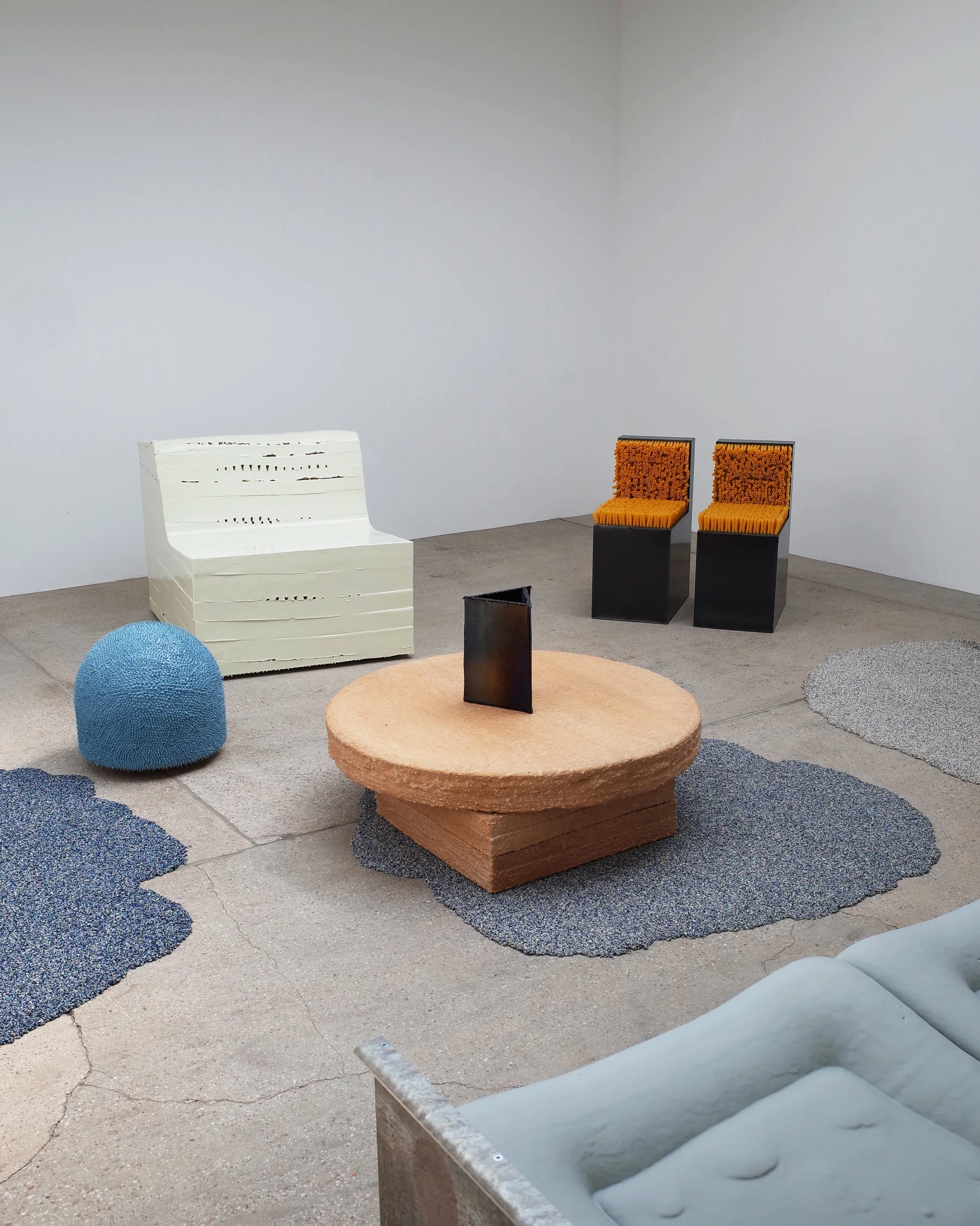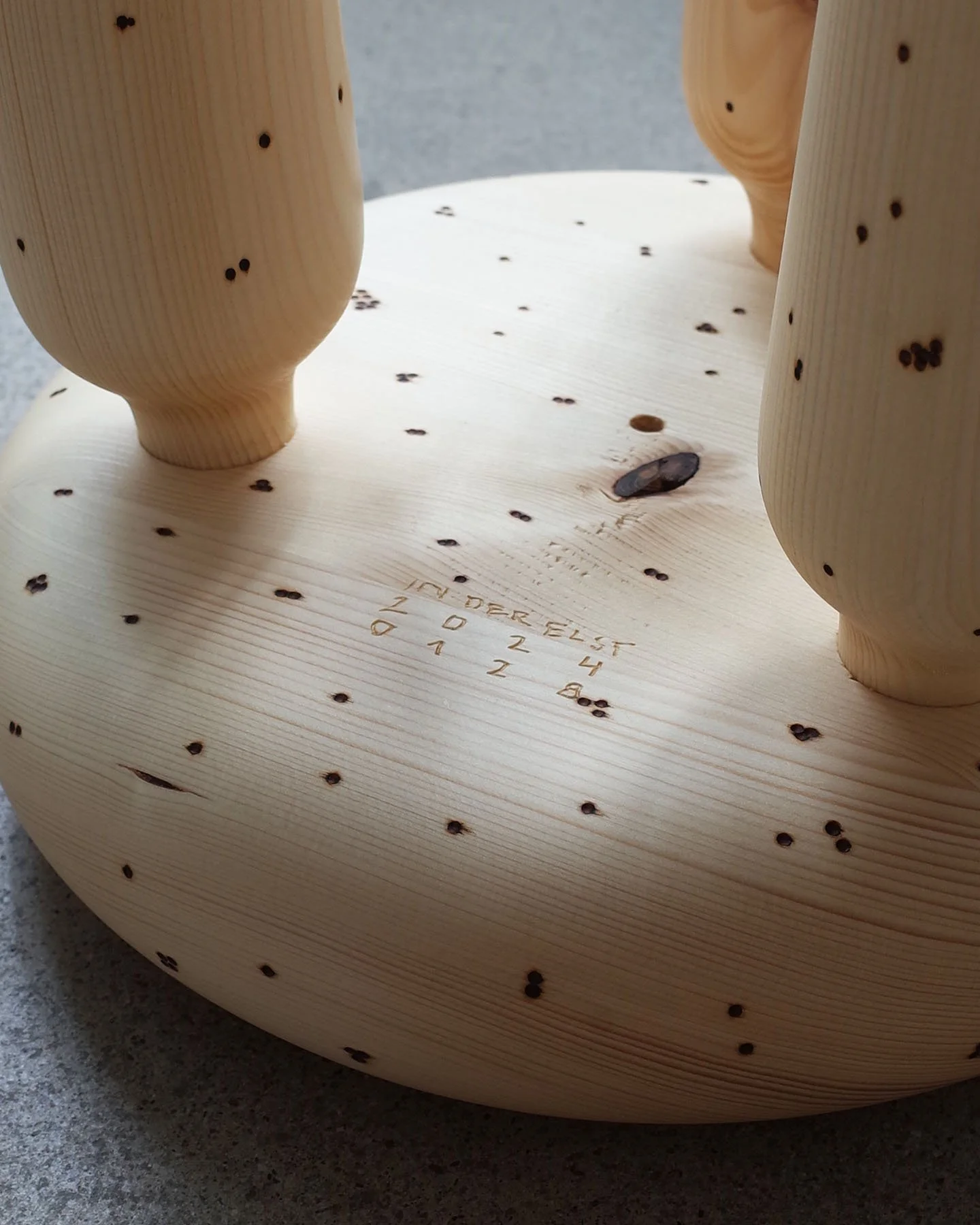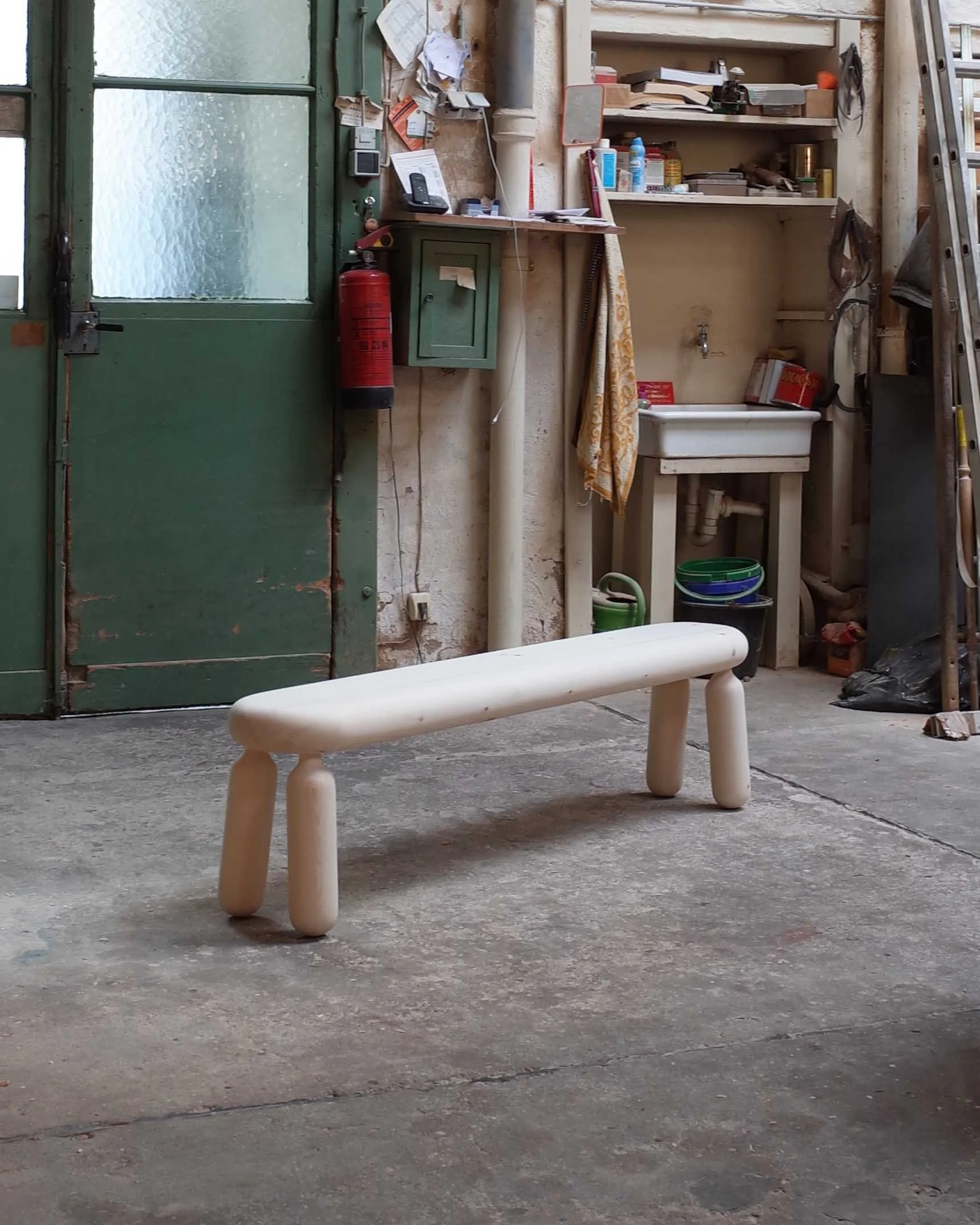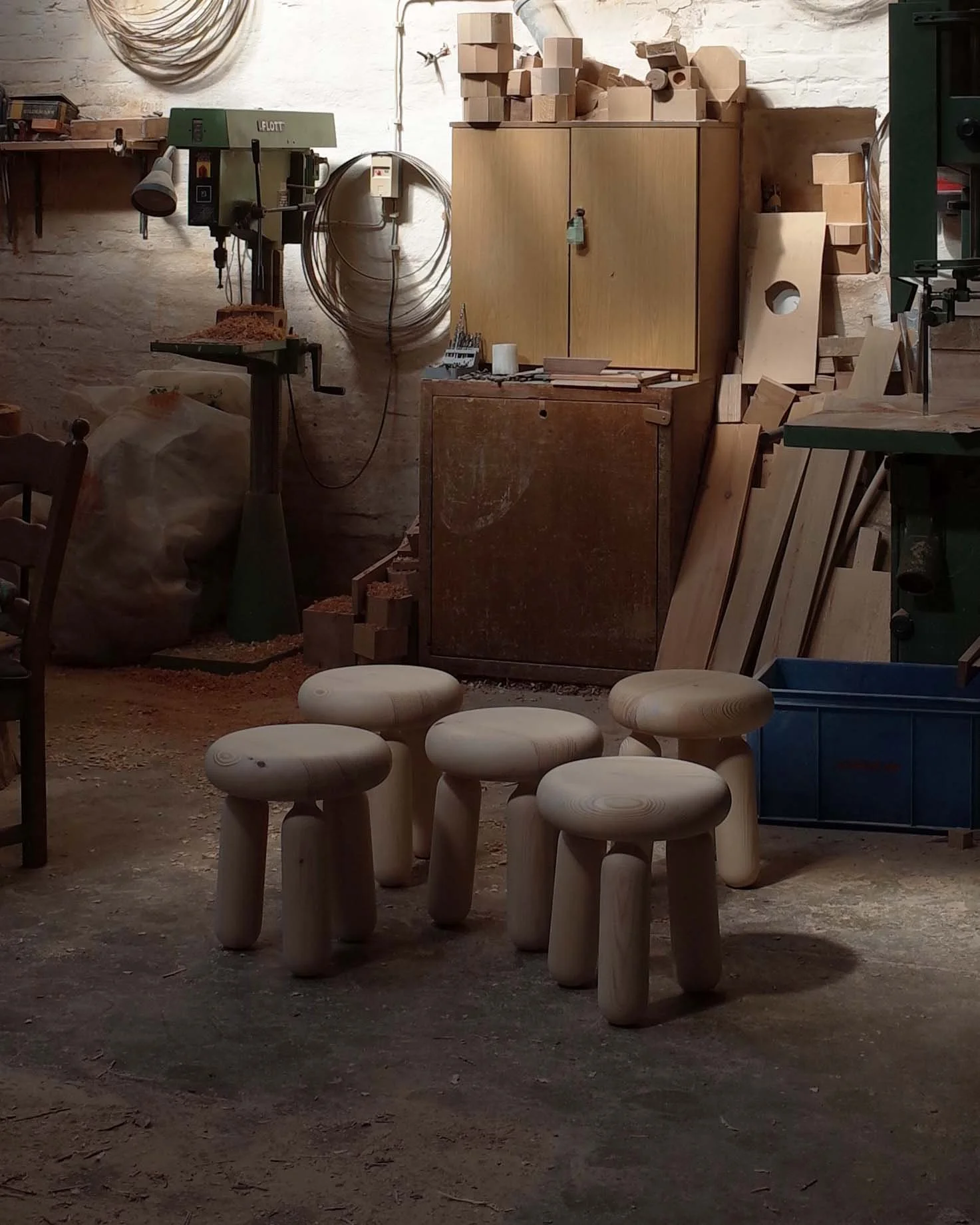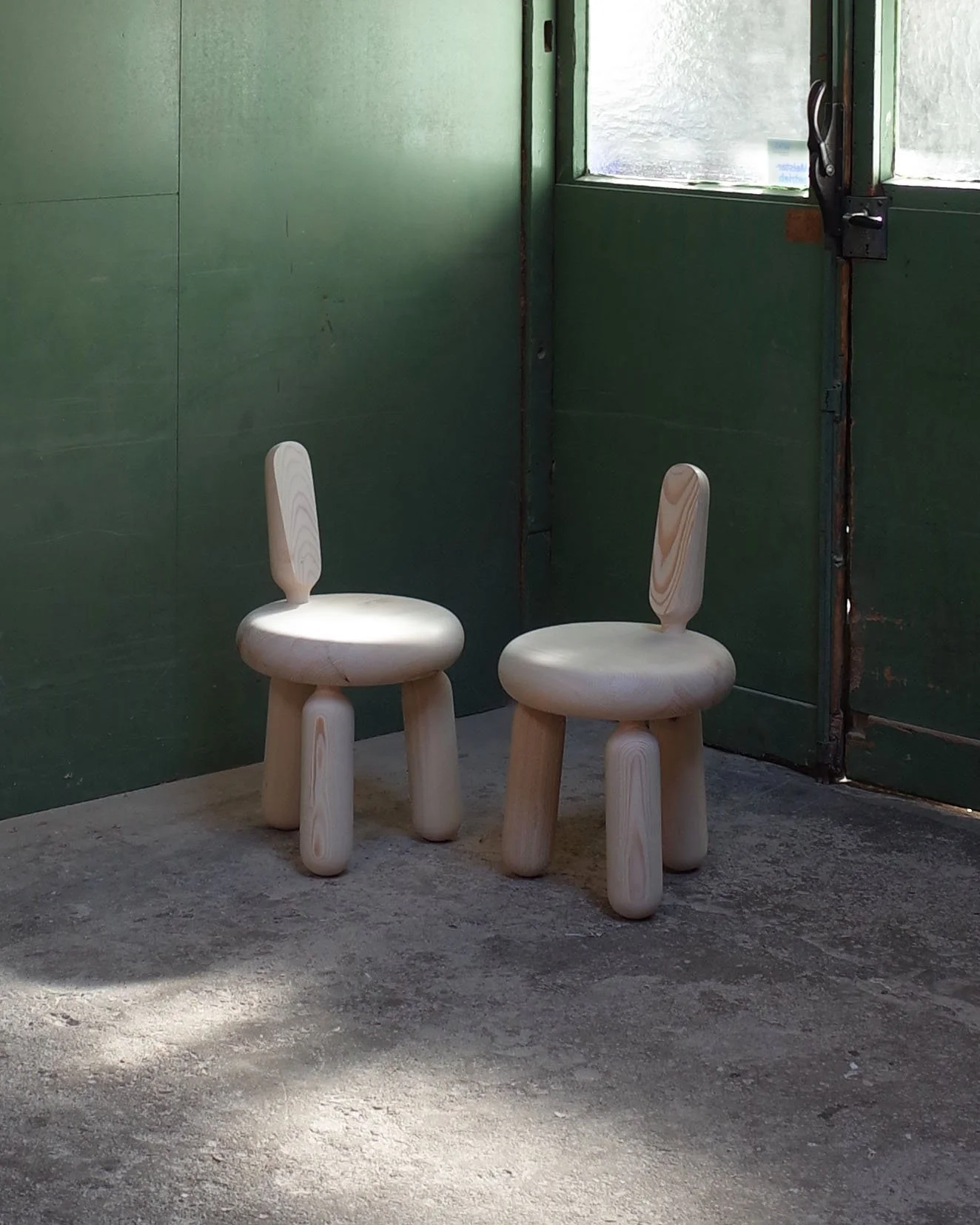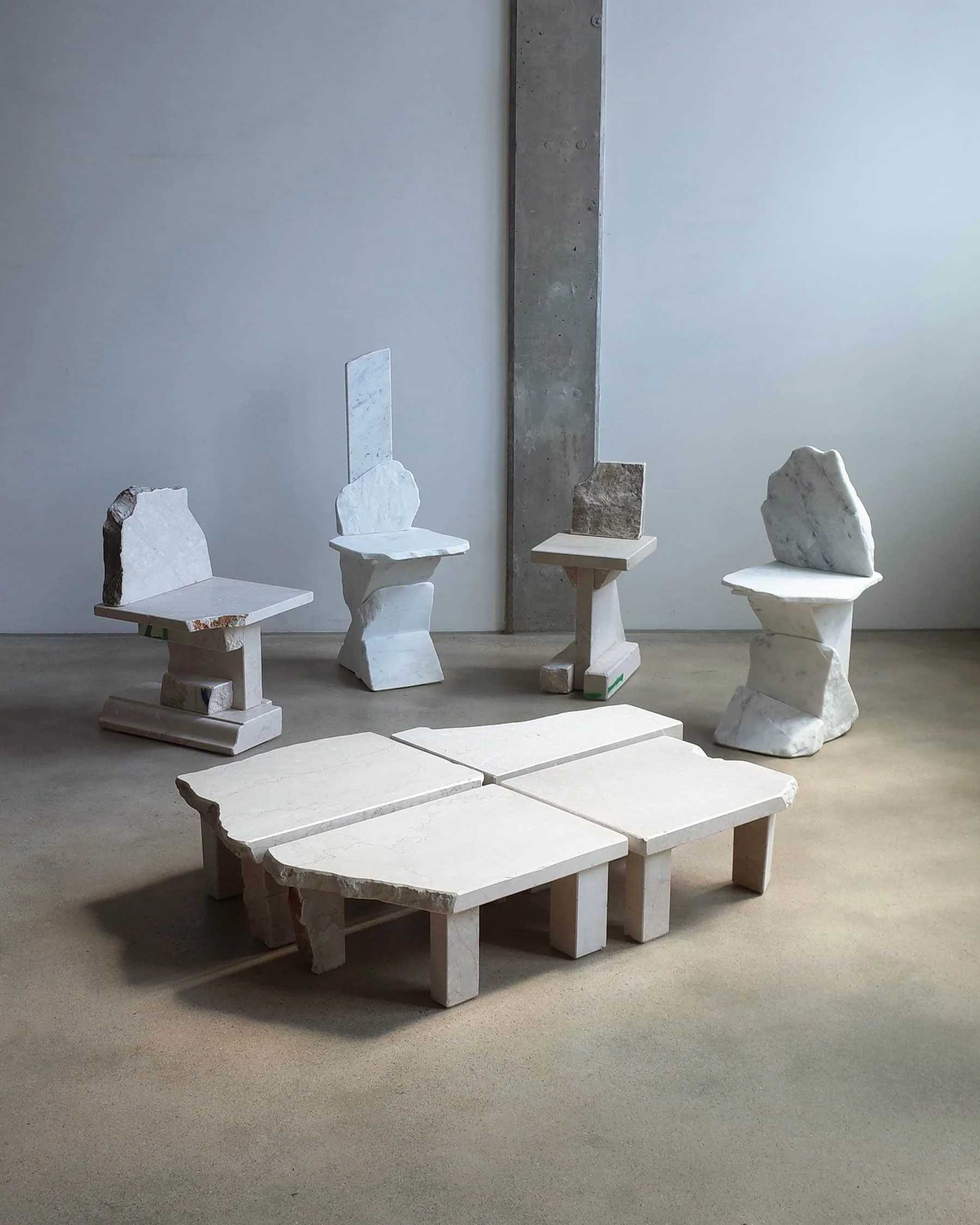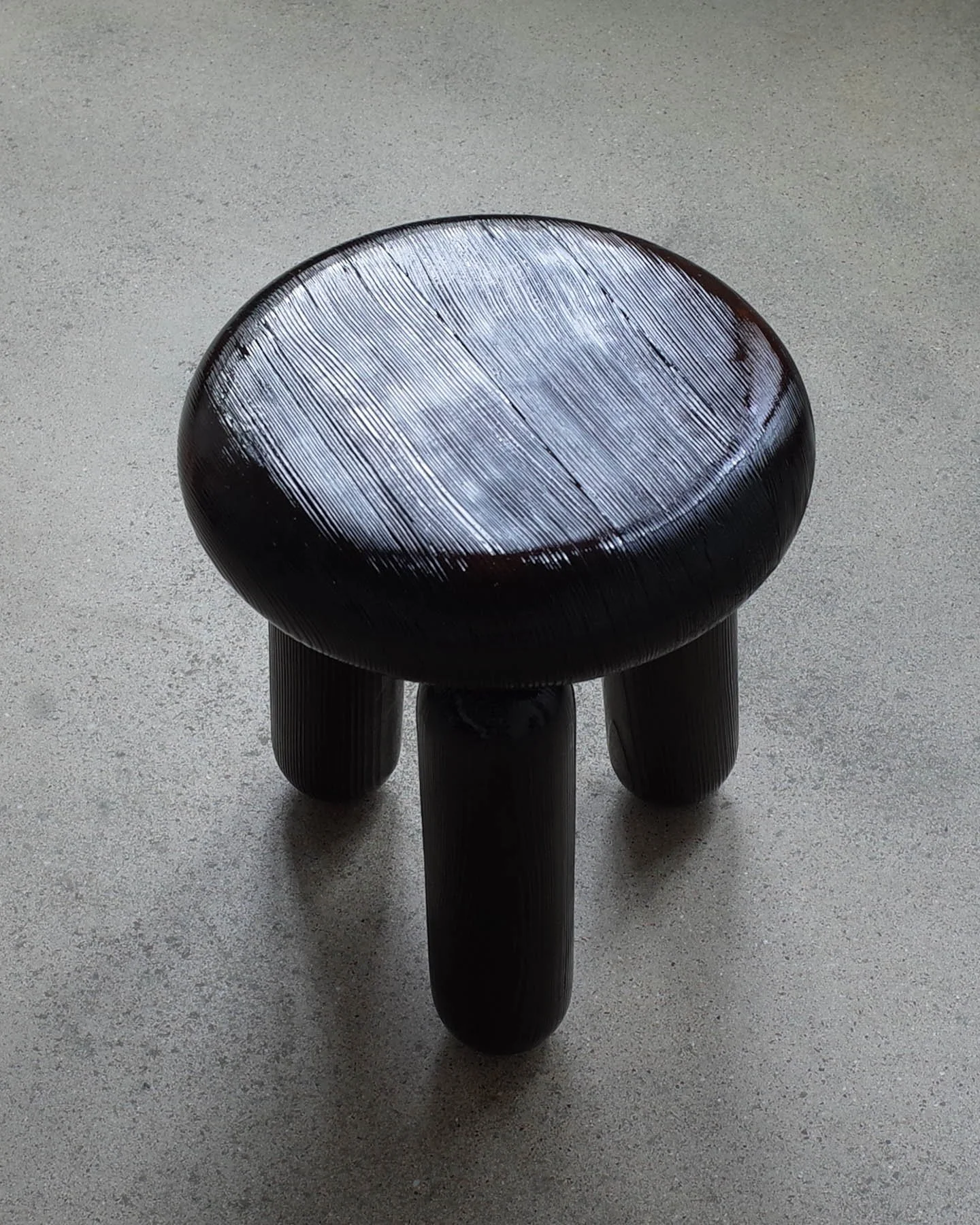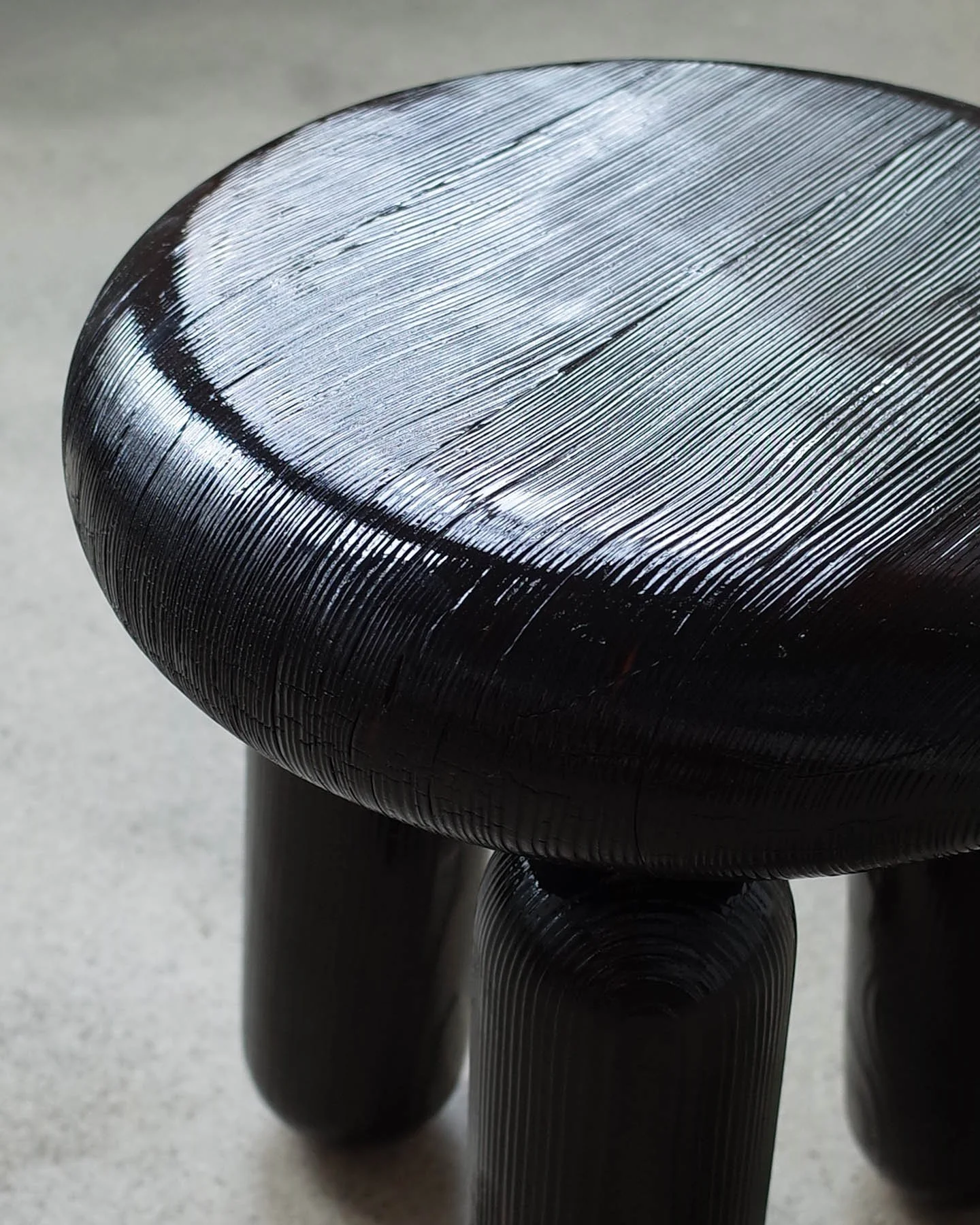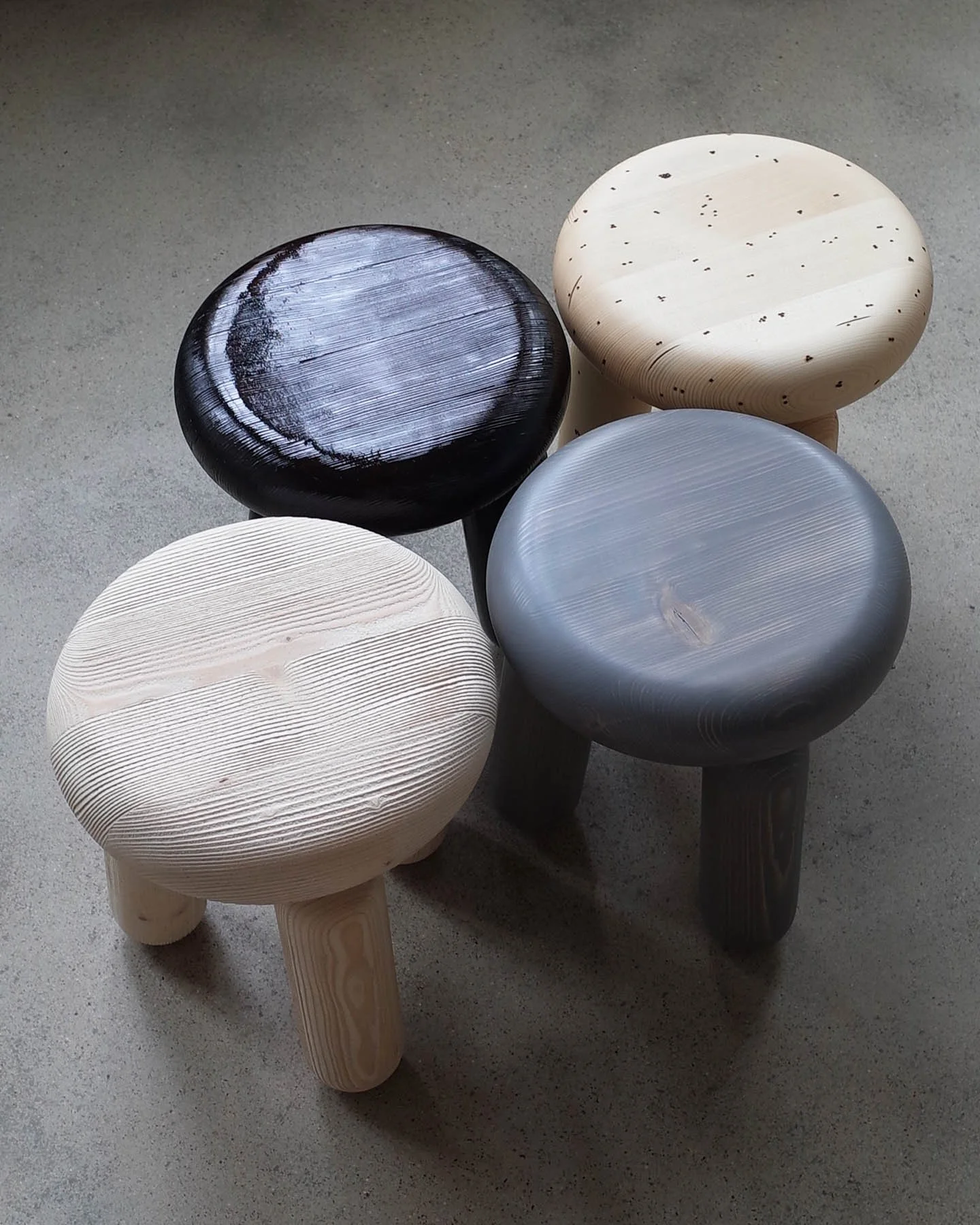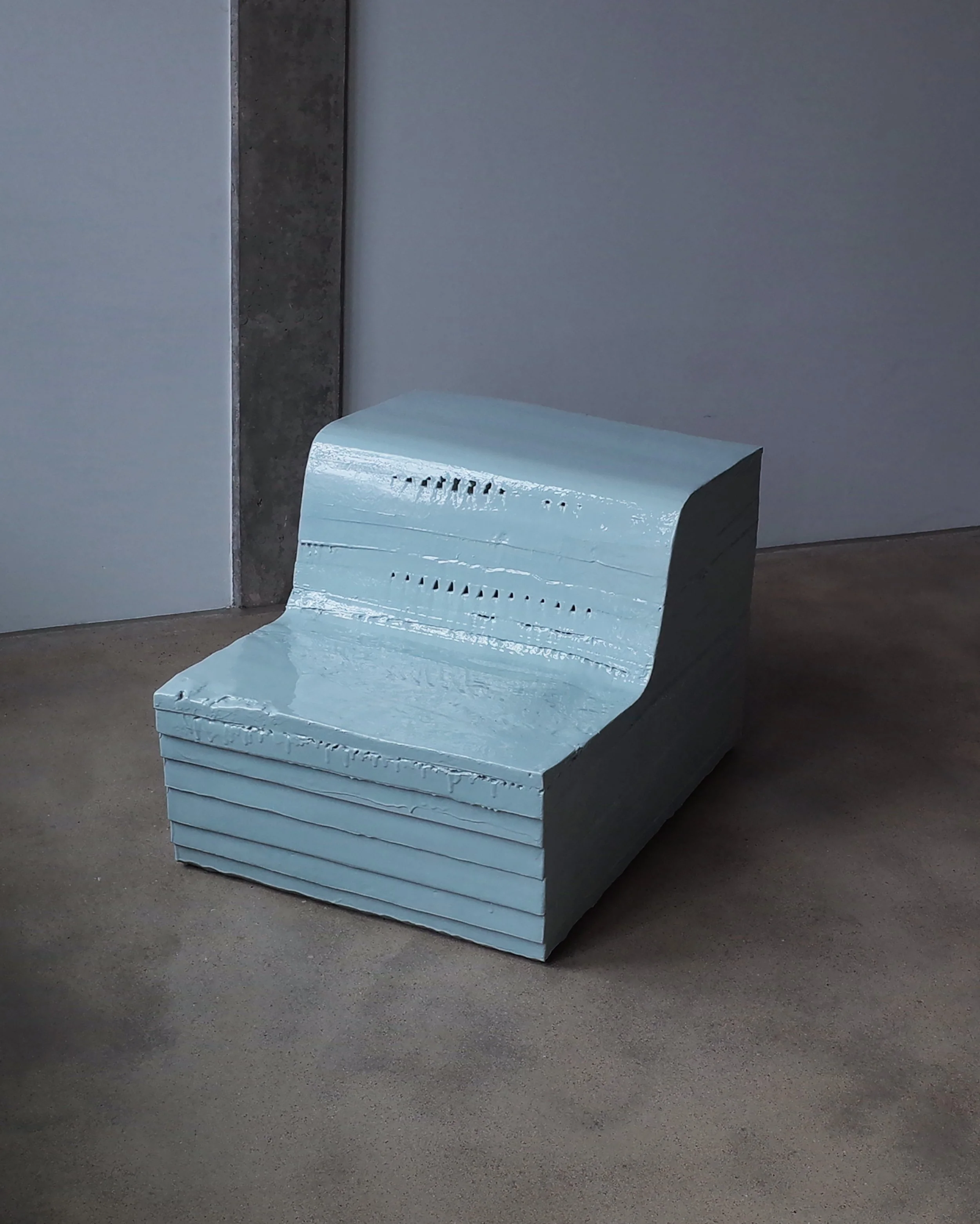Carsten in der Elst
Carsten, please introduce yourself:
I’m Carsten in der Elst, a designer from Cologne exploring what materials can become when you give them enough space to speak. I often start with industrial by-products, but I’m just as interested in how gestures, processes, and unexpected combinations can shape new stories about value, permanence, and design production itself.
Soft Works
#1 Your pieces often keep the scars and traces of their making instead of polishing them away. Was there a moment when you realised that showing a material’s “life story” could be more powerful than hiding it?
No, I don’t think there was a particular moment when I realised this. For as long as I can remember, I have always been more interested in using materials with an inherent narrative. I prefer the idea of being a conductor of material stories to that of being a seeker of the perfect form. Hiding the ‘life story’ would suggest that my idea is more important than the story itself. I like being in the background.
#2 You started exploring this language of rawness with Heavy Duty. Since then, how has your relationship with heavy, industrial by-products changed—both in how you handle them and how you see them?
As Heavy Duty was my final thesis, my relationship with the by-product materials, places and people originated from a simple and deep curiosity. Five years ago, I knew it would be a good idea to establish a body of work that could serve as a starting point or a red thread. But, put simply, I really wanted to see for myself and explore beyond the university workshops. Also, companies were surprisingly supportive when it came to students' theses. The challenge came afterwards. The unromantic truth is that rent has to be paid, and returning to Heavy Duty Partners as an independent designer wasn't easy at all. So, while my curiosity remains unchanged, the context and necessities have changed.
Iron Acetate Studio Chairs
#3 Much of your work feels like it’s in dialogue with the workshop itself — the dust, the weight, the resistance of the material. When you start a new piece, how do you decide which material to bring into that space, and how does it shape the rhythm of your day there?
There are two types of production in my work: One is in my studio and the other is in collaborating workshops of skilled craftspeople. For the former, I am limited by the mess I can make and the materials I can manipulate myself, since I also live in my studio. For the latter, the objects or materials originate from those places. Therefore, exhibiting these works in the workshops aims to communicate their origin. Sometimes I am even allowed to work in these trusted workshops.
#4 Some of your objects could easily live in a gallery, yet they invite use like furniture. Do you think about function first, or does it emerge once the form takes shape?
I ask myself: How can I use this material in its current state to create a piece of furniture, and what form would best convey the material's story without compromising its functionality?
Pine Series
#5 The way you work with offcuts, stone, and steel often reads like a form of storytelling without words. What do you hope people take away from living with one of your pieces?
Ideally, it would spark a similar curiosity to that which I experience when deciding to produce a piece. If you had to put an esoteric word on it, it might be a sense of belonging or mindfulness. I’d like people to recognise that the material in front of them has an industrial past.
#6 Materials are never neutral in your work—they carry cultural and ecological weight. In a time of shifting values in design, where do you see your practice heading?
At the start of this year, I created my first series of objects for a brand, but I was not in charge of the production. I tried to incorporate as much of the Heavy Duty approach as possible within the context of the design industry. This approach worked beautifully, and I would love to explore it further while maintaining my gallery practice. I would also like to collaborate more with fashion brands on retail spaces, restaurants and hotels.
Botticino & Carrara Offcut Series
#7 How do you see the role of an architect in today's society?
On the one hand, architects can specialise in almost every field of design, but they also have a huge responsibility. The challenge is to build more space for more people without using more resources. That’s a tough one!
#8 How does your environment influence your work?
The materials I use and their origins, along with the methods of production, shape the character of my work. I believe that these elements influence every aspect of my practice.
Pine Series
#9 Three things that inspire you at the moment?
Upholstery substructures, mountains and Italy
#10 What do you currently read, watch, listen to?
Hook Book - Martino Gamper & Steel Work - Philippe Malouin
Videos of Indian and Chinese factory workers on Insta
Badd - Dark Sky
Foam Seat
Links
Instagram: inderelst
Website: www.inderelst.com
Interview by Lisa Puschmann

